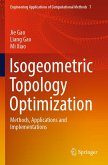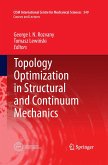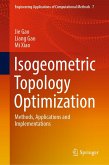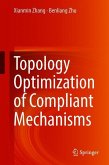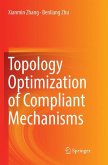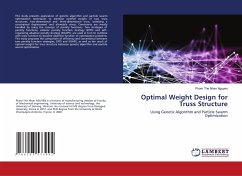When a truss structure is to be designed two important questions should be answered. First, how should the truss that requires the minimum amount of materials look like? Second, what are the possible members' cross sectional areas that support the applied load safely? In this work these two questions are answered using a two stage optimization process. In stage one, starting with hyper-connected truss ground structures that fully encompass the design region together with specified support conditions and load cases, the discrete combinations and arrangement of truss members that will yield the lightest and stiffest structure are sought. In the second stage the minimum cross sectional areas of the members that satisfy the imposed constraints are sought.In both stages harmony search algorithms are employed. These represent one of the most recent heuristic, stochastic search optimization methods that, while relatively simple and robust, overcome some of the drawbacks of preceding search techniques such as: the ability to converge to a global optimum, and the ability to optimize non-differentiable and non-continuous functions.


